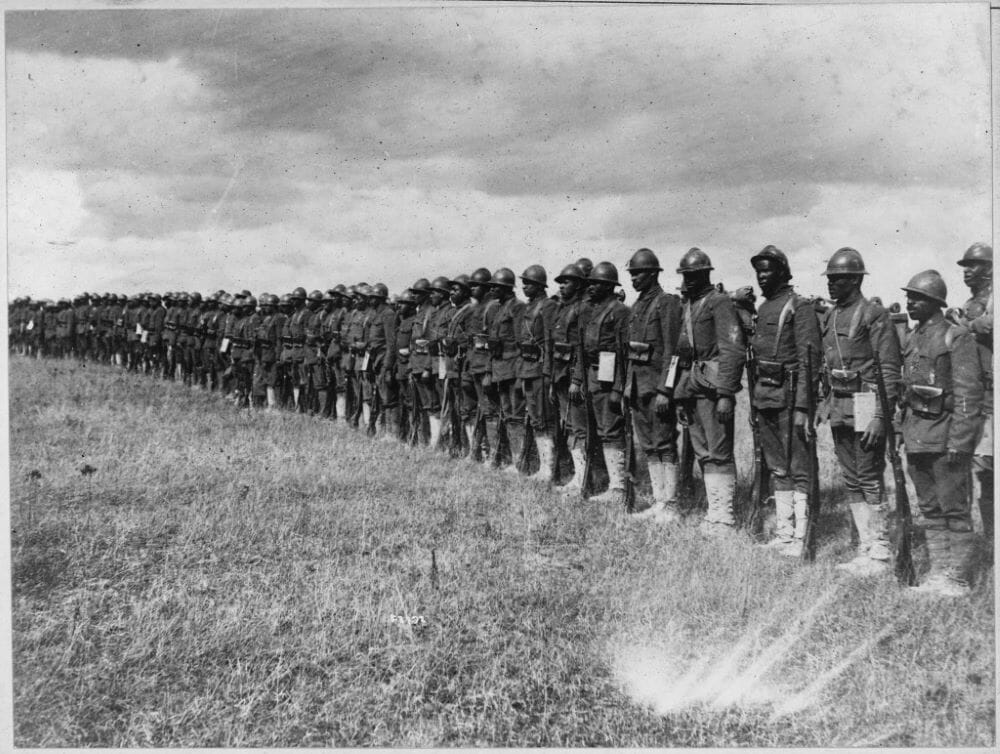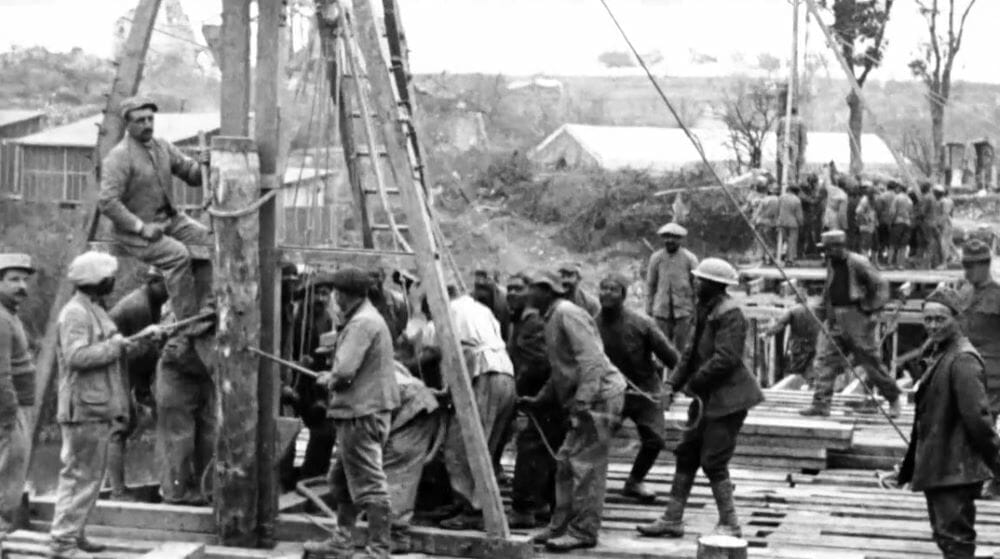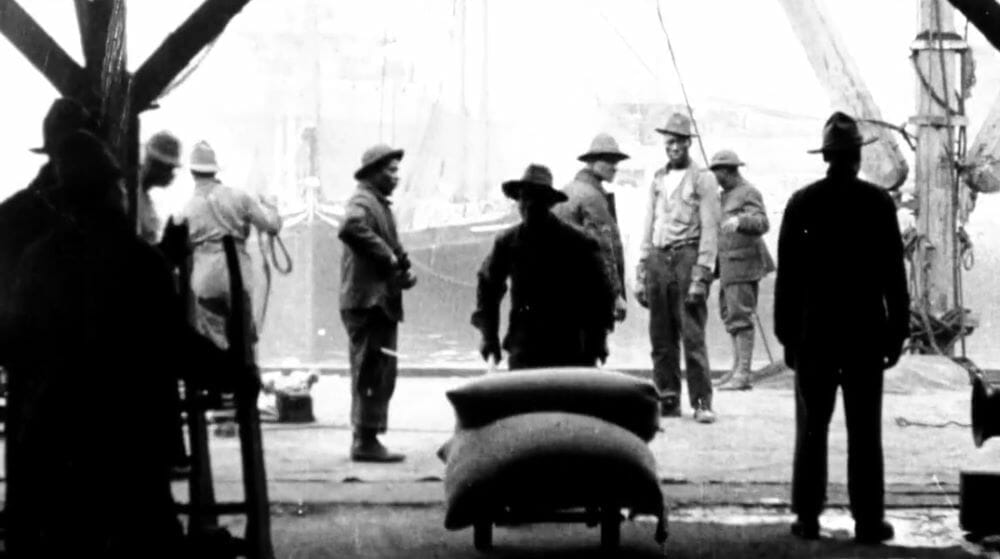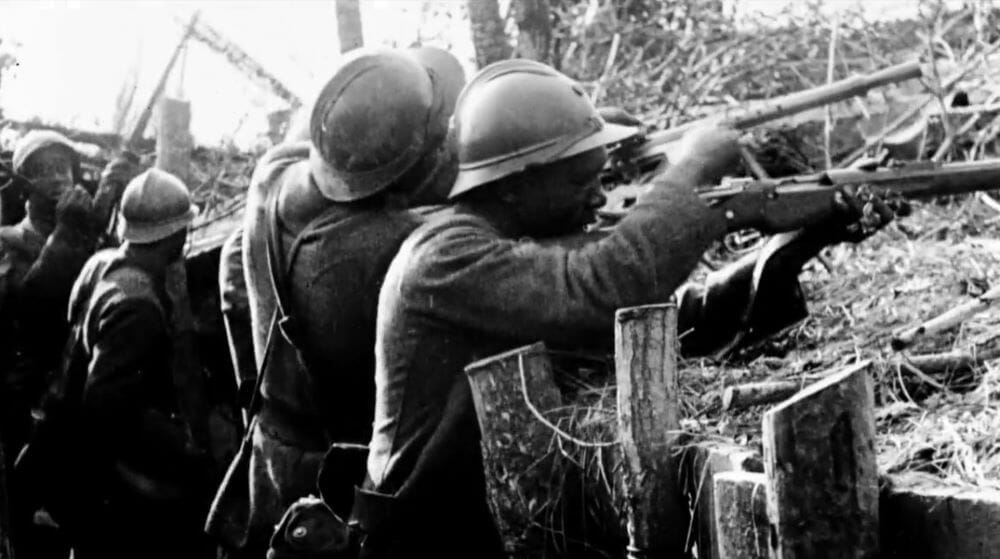Black and white footage captures about a dozen African American men in plain uniforms gathered around a wooden pile lift. Each man grips tightly onto thick ropes connected to a pulley at the apex of the manual machine. Some men cringe due to the strenuousness of the physical labor as they go into a low squat to pull further down on the rope. The coordination of all the men pulling their ropes causes the weight of the monolith to be lifted off the surface it was sitting on. Their actions are simultaneously repeated to keep the manpowered crane working.
This is one scene of the many from WWI in Fighting for Respect. The majority of these old videos focus on the all-black 369th Infantry Regiment as they continuously handle taxing tasks despite their contemporaries’ low expectations. We see them lift heavy crates, with slumped shoulders and tensed backs as they transport the supplies swiftly, hurrying onto the next task. The men of the 369th Regiment continue to keep up with the demanding fast pace as soldiers on the field, rushing through the trenches as explosions shake the ground around them. During battle scenes the men take a laser-focused aim firing shot after shot without flinching.
FIGHTING FOR RESPECT Highlights Accomplishments
In the beginning of Fighting for Respect the narrator notes that in 1918 200,000 African American soldiers were sent to France which was unprecedented. Along with footage from 1918 the film includes other primary sources such as letters and diary entries. The film highlights the real struggles members of the 369th Infantry Regiment had to face while fighting for a country that treated them as less than human.
The prejudice systems in the United States were replicated by the military thousands of miles away in France. Fighting for Respect focuses on the regiment’s accomplishments despite all obstacles and how their participation in the war changed the course of American civil rights history.
Fighting for Respect is a must-watch for history buffs, as it gives an in-depth look into overlooked parts of American history that affect the country today. Trigger warnings: vivid oral descriptions of hate crimes and footage of war.
RECOMMENDED
Read how filmmakers make their magic— in their own words. Read “FILMMAKERS SPOTLIGHT— Meet Filmmakers Picture This Post LOVES!” and watch this video for a story preview —
Nominate this for The Picture This Post BEST OF 2022???
Click Readers' Choice!
CREATIVE TEAM:
Director: Joanne Burke
For more information and tickets visit the Facets website.
Photos Courtesy of African Diaspora International Film Festival
Click here to read more Picture This Post Review of Top Pick Documentaries and watch this video --
Picture This Post Documentary Reviews RoundUp --Our Top Picks

About the Author: Nomin Altansukh
Nomin Altansukh moved to the U.S.A. at the age of nine from Mongolia. For the first two years she couldn't speak English, heavily relying on visual cues to understand what others were trying to communicate. During this time she developed an appreciation and greater desire to study non-verbal communication. Nomin enjoys several forms of art that predominantly use visual rhetoric in its narrative -- paintings, sculptures, film, and theater.
In her free time, Nomin is painting landscapes or watching her favorite hockey team, the Chicago Blackhawks.







